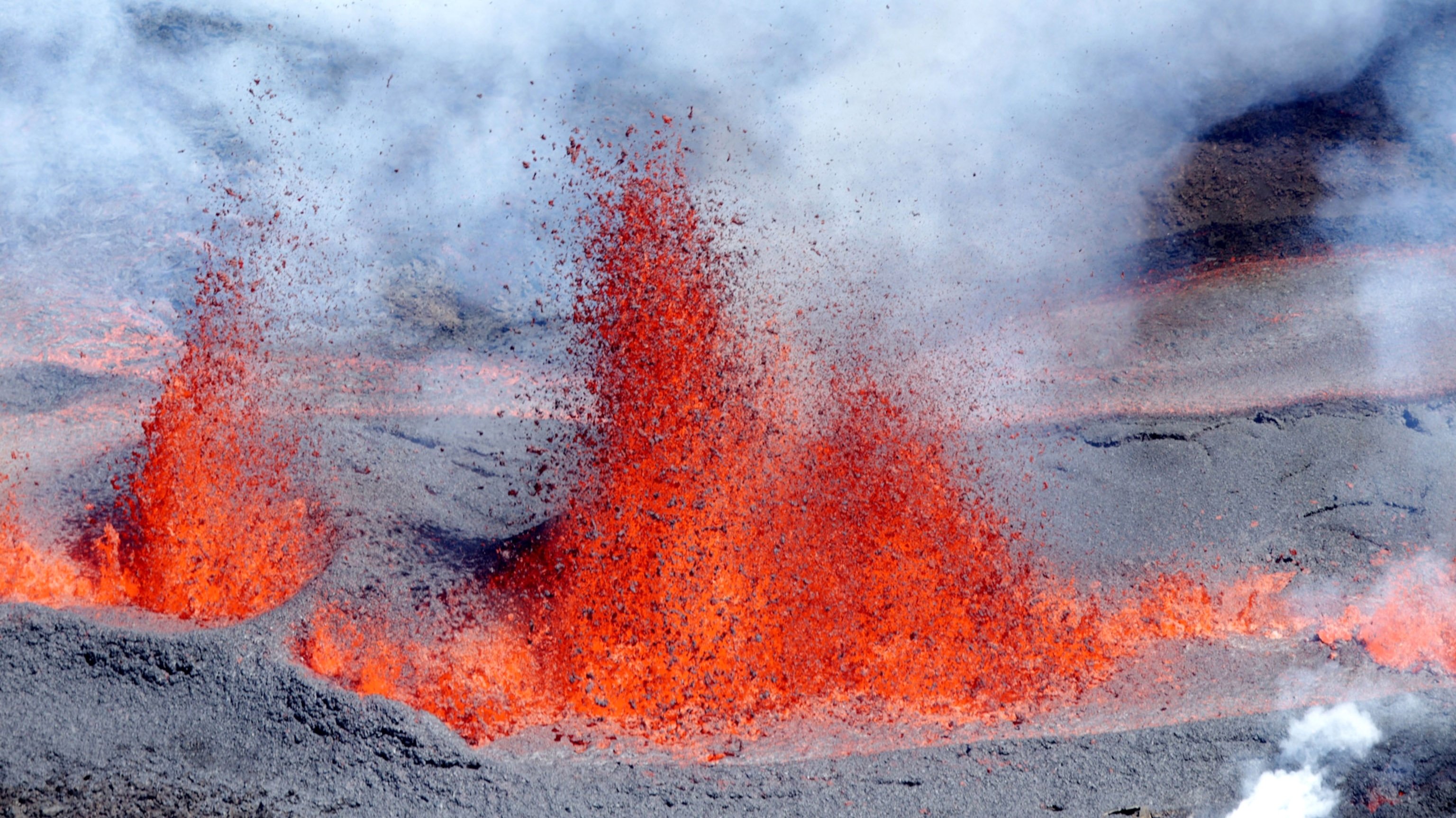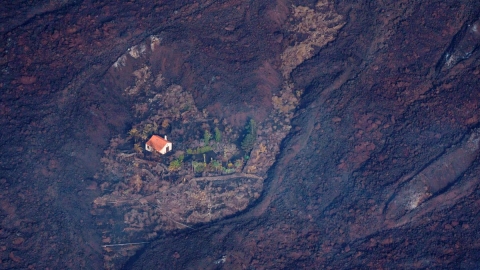Since 1841, when the first volcano observatory, the Vesuvius Observatory, was established in the Kingdom of the Two Sicilies, modern volcanology has made many discoveries. Active volcanoes are found all over the world, on land and offshore, and they can erupt unexpectedly at any given day. Incredibly, these eruptions, which can reach temperatures of thousands of degrees Celsius, help shape the Earth's surface, forming new craters, and the cooled lava flows that create countless rocky landscapes...
Each eruption is a time when they suck nutrients from deep underground and push them to the surface, forming fertile soil to nurture life. But those "shudders" are also a clear reminder of the fragility of life, and that nature is so majestic, its destructive power can destroy entire landscapes with just one volcanic eruption.
No two volcanoes are alike, and each eruption is a unique spectacle. Thanks to modern equipment and technology, we have recorded countless lava explosions and volcanic disasters. Here are 13 of the most impressive moments of nature's "explosive" moments from around the planet.
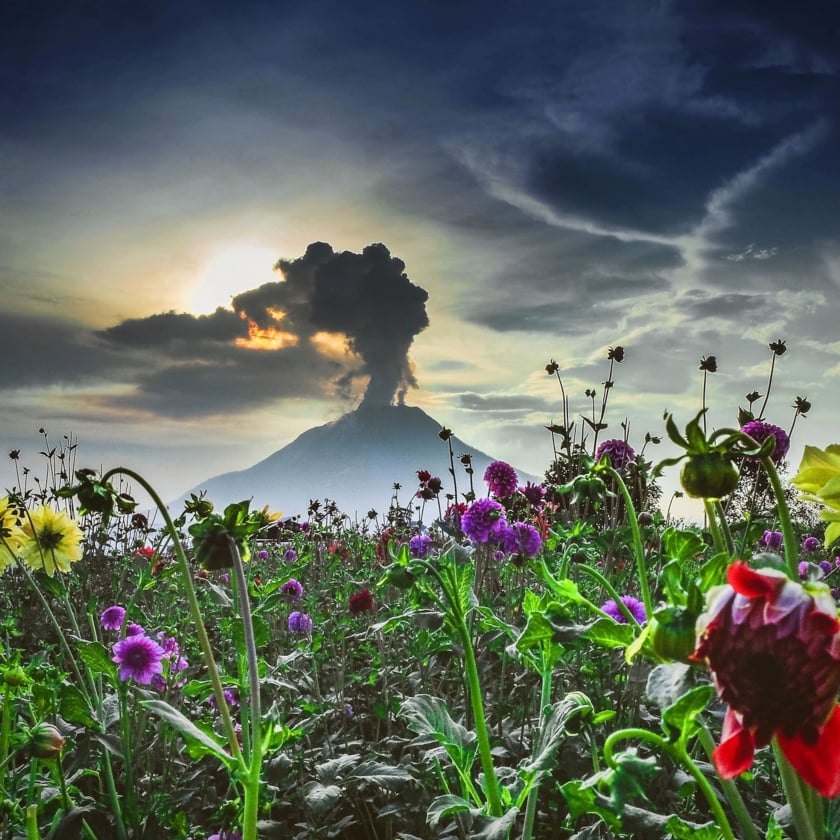
Sinabung Volcano - Photo: - Tibta Pangin, Anadolu Agency/Getty Images
Mount Sinabung in western Indonesia had been dormant for about 400 years before it erupted violently in August 2010. Since then, powerful eruptions – like this one from April 2015 – have been seen by scientists as a bold statement about Sinabung’s location on the Ring of Fire, a tectonic plate region surrounding the Pacific Ocean that is home to about 75% of the world’s active volcanoes.
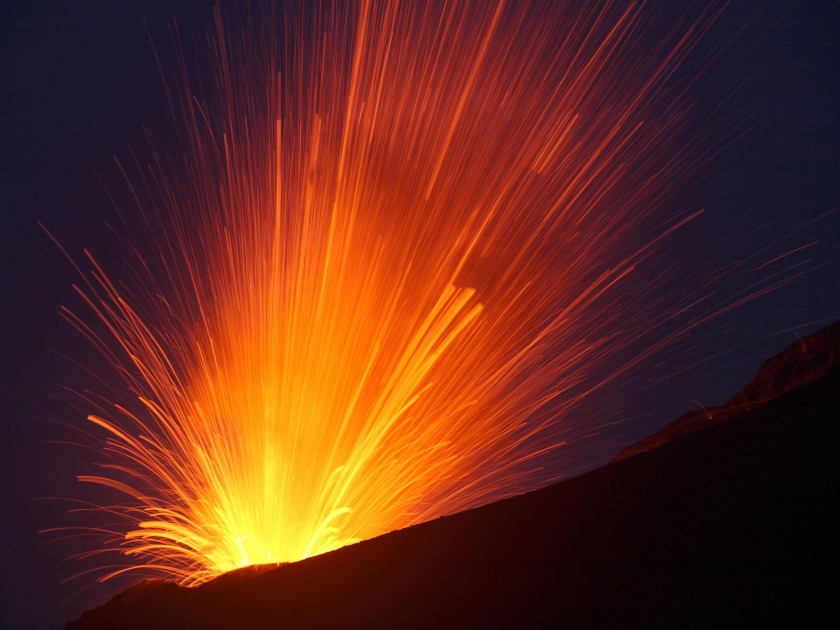
Anak Krakatau volcano - Photo: Stocktrek Images, Inc./Alamy
Indonesia’s Anak Krakatau volcano is a particularly active volcano, erupting every few years. It formed from a crater left behind by the explosion of Krakatoa, one of the worst natural disasters in history. Anak Krakatau also caused a disaster, in the middle of a six-month eruption in 2018, when its flank collapsed and created a tsunami in the Sunda Strait.
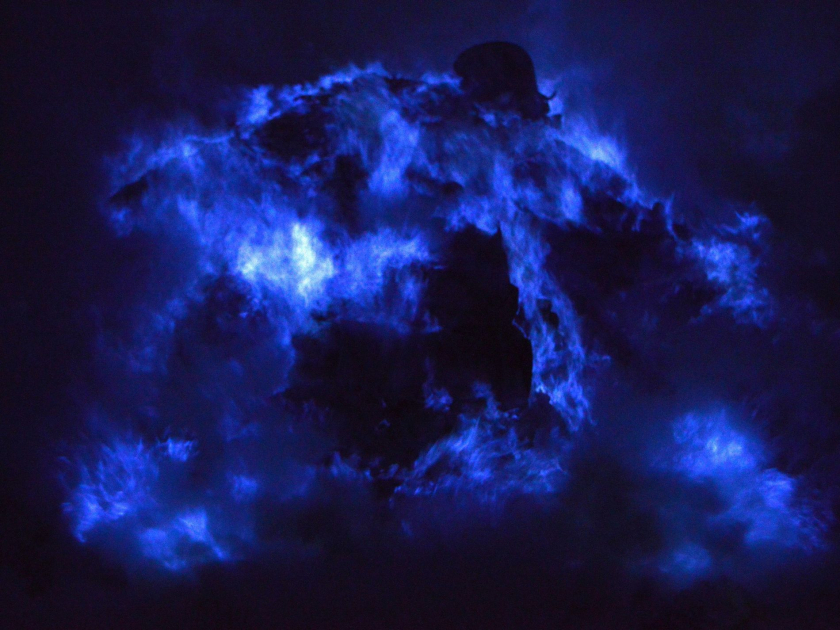
Kawah Ijen volcano - Photo: Sonny Tumbelaka, Afp/Getty Images
Also located in Indonesia, the Kawah Ijen volcano had a stunning “light show” thanks to the large amount of sulfur released during the eruption. The sulfur seeped through cracks in the volcano, met with extremely high temperatures, and ignited when exposed to air, erupting into a mysterious blue flame.
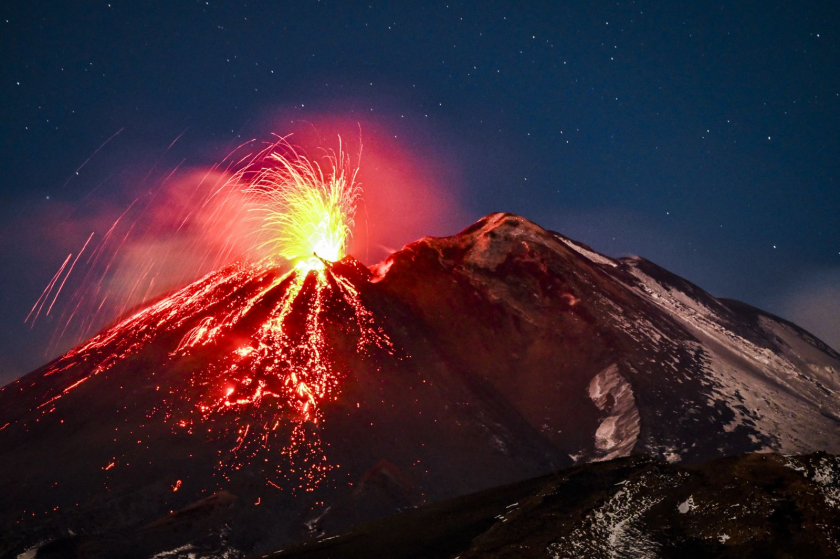
Mount Etna volcano peak - Photo: Fabrizio Villa, Getty Images
Mount Etna in Italy is part of Europe’s largest active volcano, and regularly draws attention for its spectacular explosions, from molten rock to ring-shaped ash arcs. This image was taken in December 2018, as Mount Etna continued to erupt. It is one of the earliest documented and studied volcanoes on Earth, with regular eruptions dating back to 1500 BC. Mount Etna is also slowly sliding into the Ionian Sea, raising concerns that large chunks of rock could break off and trigger massive tsunamis on the Mediterranean coast.
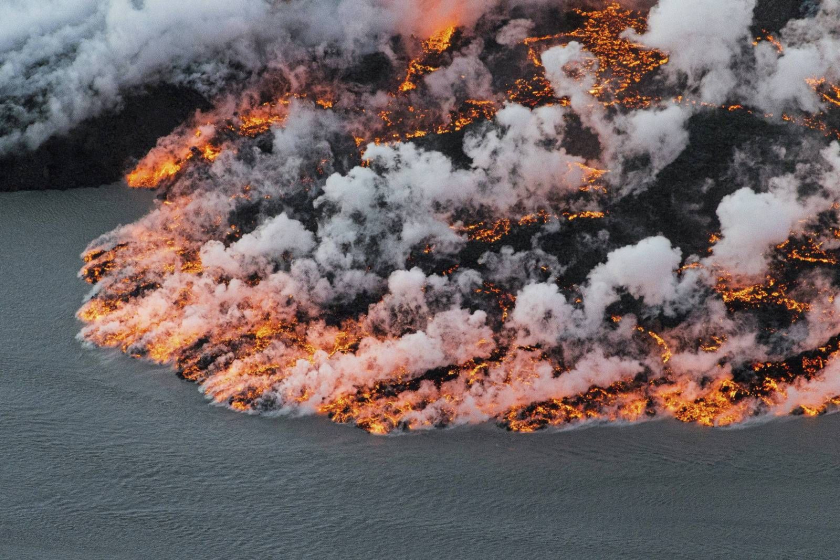
Bárðarbunga Volcano - Photo: Bernard Meric, Afp/Getty Images
Iceland’s Bárðarbunga volcano is a dangerous place: Its central crater is buried under ice, but lava tubes rise to the surface as crisscrossing fissures. These fissures, extending from deep underground, can eject massive molten rock, creating the largest known lava flow on Earth in 11,000 years.

Residential area in Hawaii during an eruption of the Kilauea volcano - Photo: Mario Tama, Getty Images
In 2018, Hawaii's Kilauea volcano ended more than three decades of near-continuous eruption with a fiery explosion. It spewed enough lava to fill at least 320,000 Olympic-sized swimming pools and created a river of fire that swallowed everything in its path, including the pictured Leilani Estates neighborhood.
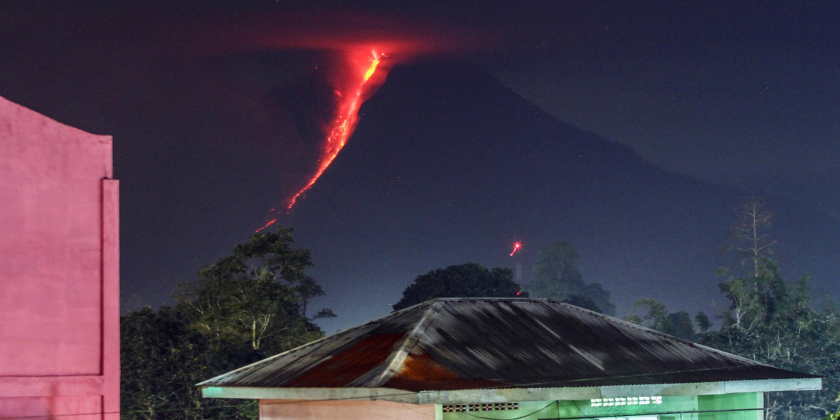
Photo: Ivan Damanik, Afp/Getty Images
Pictured is a red-hot lava flow down the slopes of Mount Sinabung in Karo, North Utara in 2018. Although these eruptions are dangerous, the rich soil and rock from the summit have created a vast expanse of fertile land, attracting many people to settle in the area.

Sakurajima Volcano - Photo: The Asahi Shimbun, Getty Images
Volcanoes not only produce fiery lava flows and countless beautiful “hail” streams, but also create unusual lightning. This is the result of frictional buildup of colliding particles in a billowing volcanic cloud. When the friction builds up to a certain level, the cloud of dust discharges, resulting in lightning, as seen in this 2016 photo of Japan’s Sakurajima volcano.
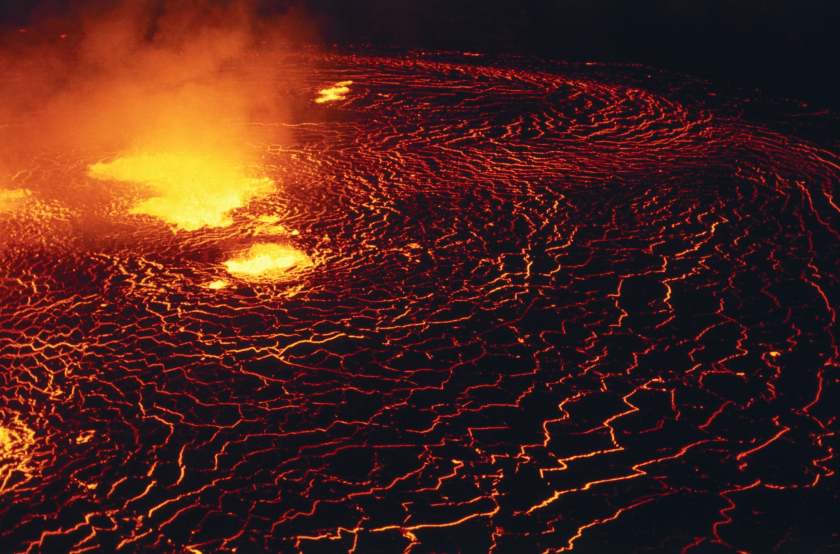
Lava lake in Kilauea volcano crater - Photo: Brettmann, Getty Images
Long ago, a lake of molten lava formed in Kilauea’s Halemaʻumaʻu crater. When the volcano erupted in 2018, the lake began to drain, until the lava was gone completely. About a year later, something peculiar suddenly appeared in its place: a small pond. Scientists believe the pond may have been formed by groundwater seeping up from underground.
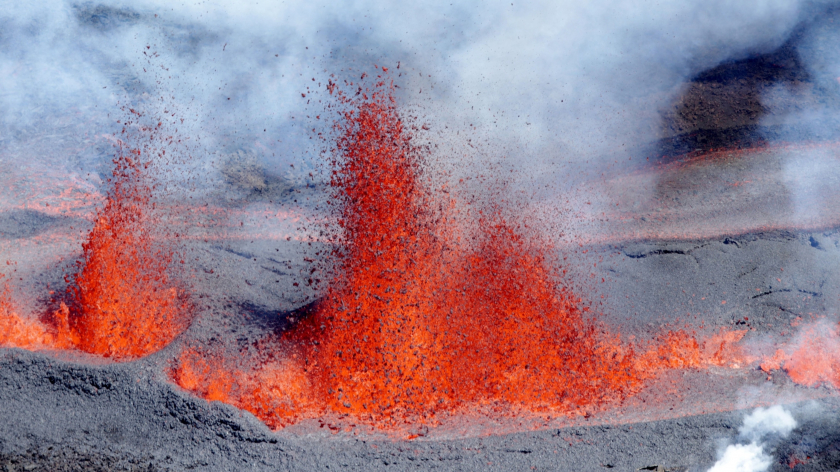
Photo: Richard Bouhet, Afp/Getty Images
One of the world’s most active volcanoes is Piton de la Fournaise – or “top of the furnace” – on the French island of Réunion. Since the 17th century, more than 150 eruptions have rocked the volcano and the surrounding area. Pictured here is an eruption of Piton de la Fournaise in September 2016.
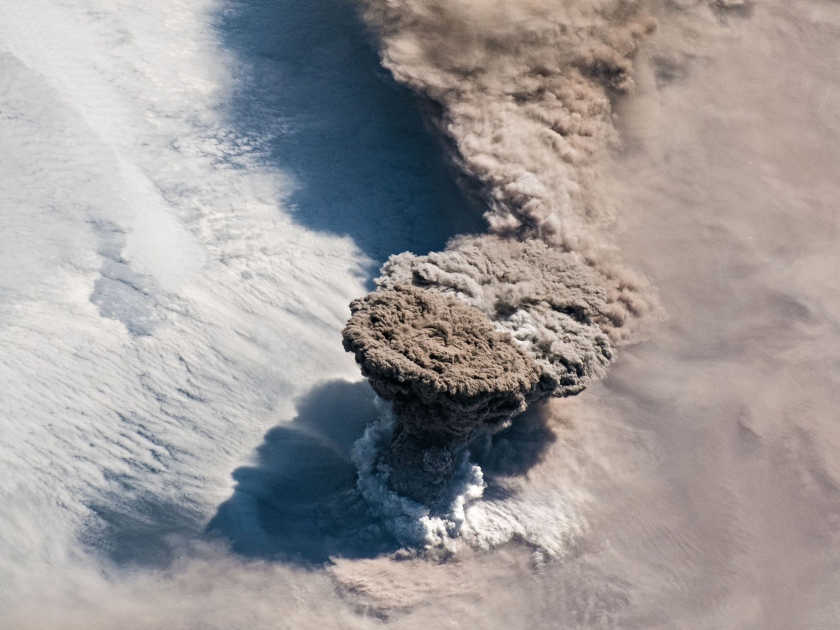
Photo: NASA
On June 22, 2019, the Raikokoe volcano erupted, sending a towering column of gas and ash into the sky over the North Pacific Ocean. The eruption was so large that astronauts spotted it from the International Space Station and captured images of the spreading cloud. Particles from the eruption drifted into the stratosphere, scattering light and giving sunsets and sunrises a purple hue.
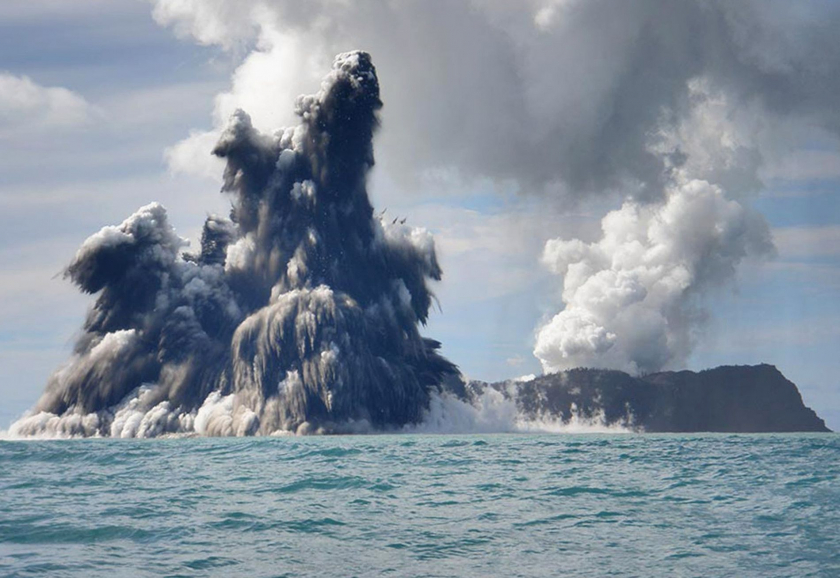
Photo: Dana Stephenson, Getty Images
While there are countless volcanoes scattered across the land, many others lurk beneath the sea. A photographer captured this volcano erupting off the coast of Tonga in March 2009. It is one of 36 underwater volcanoes recorded in the region.
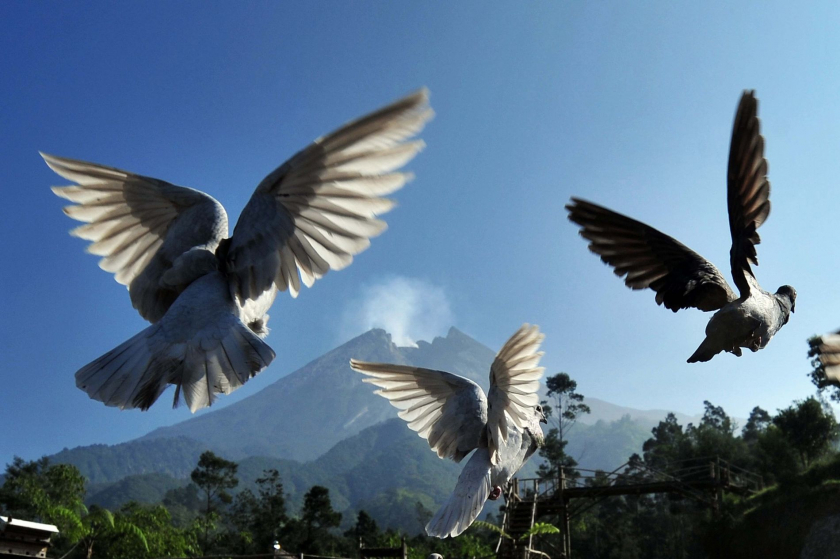
Photo: Agung Supriyanto, Afp/Getty Images
In this photo, pigeons take flight as Indonesia's Mount Merapi volcano erupts on June 4, 2018. The volcano is known for producing pyroclastic flows – fast-moving avalanches of hot rock, gas and ash. Because of its proximity to the densely populated city of Yogyakarta, Merapi's eruptions have had a serious impact on local residents.






